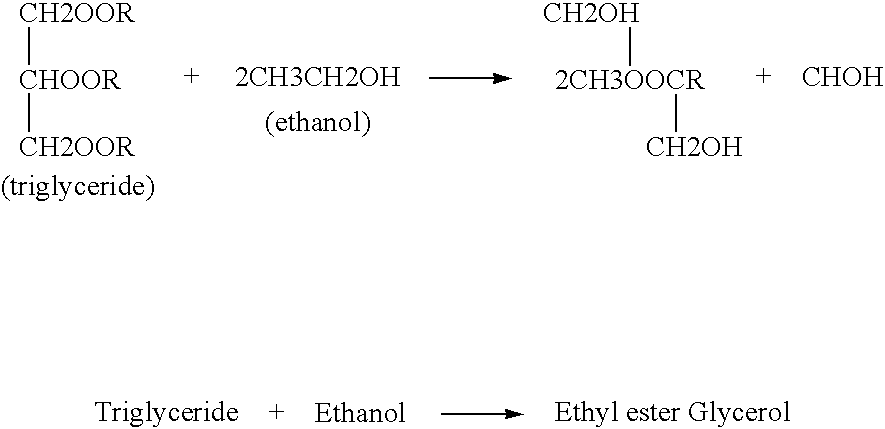Production of biodiesel from combination of corn (maize) and other feed stocks
a technology of biodiesel and corn, which is applied in the direction of fatty-oils/fat refining, fatty-oils/fat separation, carboxylic compound separation/purification, etc., can solve the problems of limitation of oileeds in the production of biodiesel, and achieve the effect of increasing the production output of biodiesel
- Summary
- Abstract
- Description
- Claims
- Application Information
AI Technical Summary
Benefits of technology
Problems solved by technology
Method used
Image
Examples
Embodiment Construction
[0033] The primary embodiment of the present invention overcomes the uncertainties in Biodiesel production due to feed stock shortages (scarcity of oil and ethanol) and addresses environmental and water utilization issues by using corn as the basic feed stock and adding Simarouba, Mahua, molasses later in the process.
[0034] WET PROCESS: Kernel of corn, as base or major raw material, is inspected and cob, dust, stones, chaff and foreign materials are removed. Cleaning is done before wet processing. Cleaned corn is filled in large steeping tanks (steeps), where corn is soaked in hot water for 40-45 hours.
[0035] The steeping is a controlled fermentation and the addition of sulphur dioxide (sulphur stone is heated in oven or SO2 plant and resultant sulphur dioxide is absorbed in hot water) to the extent of 2000 ppm or lime or both in the hot water (steep water) helps control the fermentation and help suppressing detrimental bacteria, molds, fungi and yeasts. The kernels swells to more...
PUM
| Property | Measurement | Unit |
|---|---|---|
| pH | aaaaa | aaaaa |
| concentrations | aaaaa | aaaaa |
| TG | aaaaa | aaaaa |
Abstract
Description
Claims
Application Information
 Login to View More
Login to View More - R&D
- Intellectual Property
- Life Sciences
- Materials
- Tech Scout
- Unparalleled Data Quality
- Higher Quality Content
- 60% Fewer Hallucinations
Browse by: Latest US Patents, China's latest patents, Technical Efficacy Thesaurus, Application Domain, Technology Topic, Popular Technical Reports.
© 2025 PatSnap. All rights reserved.Legal|Privacy policy|Modern Slavery Act Transparency Statement|Sitemap|About US| Contact US: help@patsnap.com


